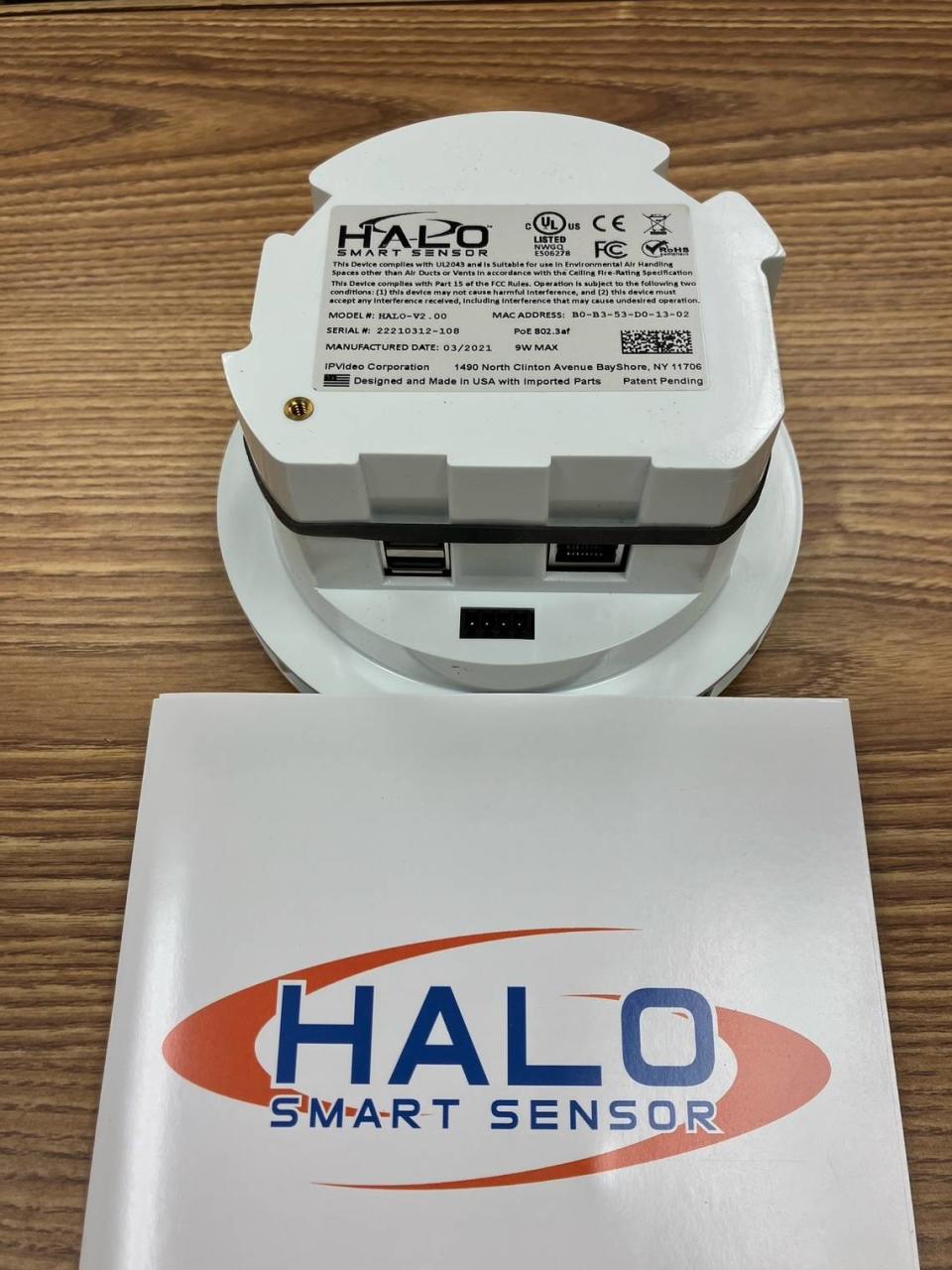Sensors detect vaping in bathrooms at Modesto high schools. What parents need to know
Modesto City Schools is installing smart sensors in high school and junior high bathrooms to combat vaping and make restrooms safer for students.
The school district is buying 63 Halo Smart Sensors through a $100,000 grant from the state Department of Justice.
Obviously, bathrooms are not a place for surveillance cameras to monitor activity. But these high-tech sensors are able to detect vaping, tobacco smoke and marijuana, as well as gunshots and unusual sounds that might indicate aggressive behavior.
Modesto City Schools said special sensors are in place at 1,500 school districts in the nation. In Modesto, the Halo Smart system was piloted at Roosevelt Junior High School. Downey and Modesto high schools recently have deployed the sensors.
Jason Manning, principal of Modesto High, said students vaping in bathrooms is definitely an issue at his school and other campuses. “(The sensors) are another tool we can use to increase safety and make the bathrooms hazard-free,” he said.
In trying to monitor a campus with more than 2,500 students, the sensors enable school administrators and campus supervisors to find out much sooner when vaping or other activities are creating a nuisance in restrooms.

Tim Zearley, associate superintendent of business services for MCS, said the sensors can pick up cigarette smoke but also are finely tuned to detect the emissions from vaping devices.
In another security feature, the units can recognize the decibel level or vibration of a gunshot, Zearley said.
The smart sensors are connected to the internal communications network at school sites. Notifications, such as an email or text, are sent to designated staff when smoke or vapor is detected, Zearley said.
The notifications include the incident, the time and which restroom.
Zearley said the sensors are installed in primary restrooms most often used by students. The sensors, which look like smoke detectors, are mounted in the ceilings out of reach and send a signal to staff if there is any tampering.
Some high school students have been caught smoking or vaping in the short time the sensors have been in use this fall. Vaping is a violation of Modesto City Schools’ code of conduct.
In the case of a tobacco product, a first offense may trigger a behavioral intervention. The disciplinary action for a second offense is a two-day suspension, and a third offense is three days.
A student vaping a controlled substance like marijuana may be suspended for five days, which can be reduced to three days if the parents and student agree to counseling.
Manning said the school mostly hopes the system serves to prevent students from risking their health by vaping tobacco products or other substances.
Students are made aware of the bathroom sensors and consequences in the school’s daily announcements and other platforms.
The Department of Justice funding will cover six sensors at each Modesto high school, four sensors at junior highs and four at Elliott Alternative Education Center.
Marie Russell, spokeswoman for Turlock Unified School District, said her district has introduced vape sensors in some restrooms at schools.
“Unfortunately, traditional smoke detectors do not detect vaping,” Russell said. “We have applied for a grant to install vape sensors in all student restrooms at our (high schools).”
Russell said the TUSD will move forward with vape sensors in high school restrooms with or without the grant funding.
Lung damage, learning problems are risks of vaping
A study released this month found that almost one in nine middle school and high school students reported using tobacco products. According to the Centers for Disease Control and Prevention study, e-cigarettes were the most common product favored by young people.
Vaping exposes young people to risks of lung damage, learning problems, memory loss, anxiety and irritability, said Kamlesh Kaur, a health educator for the Stanislaus County Health Services Agency.
She said a single e-cigarette pod may contain as much nicotine as 20 regular cigarettes. Because of the use of nicotine salts in some vaping devices, a high level of nicotine is inhaled more easily, the CDC says.
Research has shown that teenagers who vape are more likely to smoke cigarettes when they become adults, increasing the risk of lung cancer, heart disease and stroke, Kaur said.
Kaur formerly worked in the county’s tobacco outreach program and said an undercover operation in 2019 found that 28% of retailers surveyed in Modesto were willing to sell vape products to minors. The survey operation sent young adults who looked like teenagers into stores.
In California, it’s illegal to sell tobacco products to anyone younger than 21. Proposition 31, which was passed by voters statewide this month, will uphold a legislative ban on flavored tobacco products starting in December. It won’t be illegal to possess flavored cigarettes or vaping devices, but retailers selling the products to young people could be fined $250.

